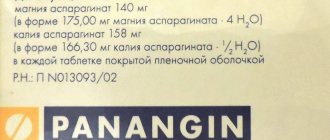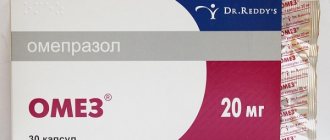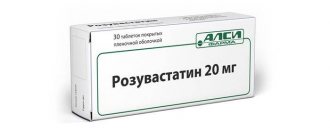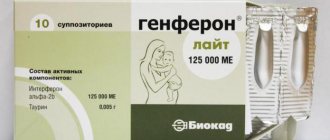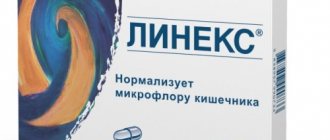Diclofenac injections are non-steroidal drugs with anti-inflammatory properties. The active ingredient of the medicine is diclofenac sodium. The annotation also indicates excipients, including sodium hydroxide, benzyl alcohol, mannitol. The drug is often prescribed to relieve pain from joint and other diseases. Injections with systemic effects are recommended to be given according to a schedule previously prescribed by a doctor.
What are Diclofenac injections
The drug Diclofenac (for injections) is a solution for intramuscular injection based on the active substance diclofenac sodium or potassium. It is classified as a non-steroidal anti-inflammatory drug; taking the medication is accompanied by an analgesic and antipyretic effect. Diclofenac eliminates back pain and intra-articular pain. Indications for use are diseases of the musculoskeletal system that occur with pronounced pain.
Diclofenac injections are prescribed by a doctor during acute attacks of rheumatic diseases, radiculitis, arthritis and osteochondrosis. Intramuscular injection is the most effective and fastest way to relieve pain; the maximum concentration of the active substance in the blood plasma occurs 15-20 minutes after administration of the drug. Injections of the drug are prescribed at the very beginning of treatment of the inflammatory process and for damage to connective muscle tissue.
Composition and properties
Comparing the drug with other NSAID medications, pharmacists note that it has a weaker effect on the gastric mucosa. Injections with anti-inflammatory, antipyretic and analgesic effects quickly block arachidonic acid. It is a provocateur of inflammation. Diclofenac prevents the development of a chemical reaction that promotes vasodilation and the appearance of edema.
Injections inhibit the action of cyclooxygenase, inhibiting the synthesis of prostaglandins. Diclofenac is considered a good antiplatelet agent. The drug restores joint function in adult patients and adolescents, reducing the risk of complications of the inflammatory process.
Since the maximum concentration of the active substance is reached in the circulatory system 20-30 minutes after administration, the drug effectively prevents relapse of pain. A similar effect is observed for about 12 hours.
The half-life of the active component takes up to 2 hours. Excipients take longer to be eliminated. The main metabolism occurs in the liver. A significant amount of breakdown products is excreted in urine and feces.
pharmachologic effect
The main active ingredient of the drug Diclofenac is a derivative of phenylacetic acid. It stops the release of arachidonic acid from damaged cells, thereby slowing down and stopping the inflammatory process. The drug normalizes blood circulation, restores the active movement of blood plasma cells, blocks the synthesis of inflammatory mediators, which leads to a reduction in pain. Relieves joint swelling by normalizing the formation of intra-articular fluid.
Differences between Diclofenac ointment and gel
The similarities between these two drugs have been analyzed above. The action of both products is based on the properties of the main component, which has an analgesic effect and helps mitigate the body’s reaction to the diseases described above.
The differences lie in how quickly the active component penetrates the site of inflammation and begins to act. From the point of view of pharmacological properties, the ointment is a two-component form, in which the base itself and the directly active substance are isolated. The base in this case is dimethyl sulfoxide. It is harmless to the body and is an auxiliary substance. Necessary in order to deliver the active compound to the site of the lesion deep in the tissue.
The drug in gel format is more practical to use because it has a less greasy consistency.
In addition, the ointment contains some polymer compounds necessary to increase bioavailability, but they are also contained in the gel.
The second form of the medicine is a combination of a healing solution and a polymer, which is necessary to obtain a mass of elastic consistency. At the same time, the gel does not contain a base containing fats, as in an ointment. Therefore, excess product that is not absorbed into the skin is much easier to remove. The gel is absorbed faster and is easier to wash after it gets on clothes.
What does it help with?
Diclofenac injections are recommended for short-term enhanced treatment of pain of moderate intensity that occurs during the course of the following diseases and conditions:
- sciatica;
- lumbago;
- gout;
- arthritis: psoriatic, juvenile, rheumatoid;
- algodismenorrhea;
- rheumatism;
- herniated discs;
- osteochondrosis;
- radiculitis;
- post-traumatic conditions accompanied by inflammation;
- postoperative period.
- Indications for the use of ointments based on Diclofenac - description, side effects and contraindications
- Diclofenac gel - instructions for use. What does Diclofenac gel help with, analogues and price
- Gout ointment - a list of effective drugs for exacerbation and treatment of the chronic form of the disease
Patient reviews of Diclofenac injections
Many patients who have been prescribed injections of the drug Diclofenac note a fairly short period of effect of the drug on the body. Within 20 minutes you can notice a decrease in pain . The action of the product lasts for 8 hours .
When the medicine is administered intramuscularly, it begins to be absorbed from the muscle quite slowly and therefore one injection per day is enough to relieve pain and inflammation . The course of treatment is chosen only by the doctor, depending on the degree of inflammation and pain.
Compound
Solution for intramuscular injection Diclofenac is a colorless transparent liquid enclosed in glass ampoules. One package contains a different number of ampoules - five or ten, 3 mg each, instructions for use of the drug. Each ampoule of Diclofenac sodium contains:
- active ingredient – diclofenac sodium – 0.75 mg;
- propylene glycol;
- sodium pyrosulfite;
- sodium hydroxide;
- beckons;
- benzyl alcohol;
- purified water.
Release form and composition
This product has a gel-like consistency with a creamy-yellowish tint. The drug is contained in an aluminum tube with a capacity of 50 mg. The active component of Diclofenac ointment is the component of the same name, diclofenac sodium. The product also contains additional substances: propylene glycol, mineral oil, alcohol, ammonia solution and castor oil.
In pharmacies you can also find one percent and five percent Diclofenac gel. It is often used instead of ointment. It is sold in aluminum tubes with a capacity of forty, fifty, sixty and one hundred milligrams. The five percent gel contains fifty milligrams of diclofenac, and the one percent gel contains ten. All drugs are packaged in cardboard boxes.
Instructions for the use of Diclofenac injections
Diclofenac injections are used via intramuscular injection into the gluteal muscle. The contents of one ampoule – 3 mg of the drug – are designed for one injection. For moderate pain, one injection/day is prescribed. For patients who suffer severe pain, the daily dose of the drug is increased to 2-3 times, but the maximum daily dose is 225 mg, that is, three ampoules. In cases of urgent need, injections are combined with other forms of the drug - ointments or tablets.
During pregnancy
Use during pregnancy is not recommended; the doctor prescribes Diclofenac injections only when the risks to the life of the mother exceed the potential risk to the development of the fetus. The active substance of the drug easily overcomes the placental barrier and can negatively affect the formation of the child’s internal organ systems, as well as cause discoordination of the labor activity of the uterus. Therefore, taking the drug in the third trimester is strictly prohibited. The use of the drug during breastfeeding is not recommended.
How to administer Diclofenac: dosage and procedure for using the ampoule
In the form of a solution, a course of treatment with Diclofenac is possible only after approval by a doctor and prescription of the minimum effective dosage. After opening the ampoule, it must be used immediately. Open storage is unacceptable.
Correct dosage
Compliance with clear dosages when treating with Diclofenac is strictly necessary.
The daily standard dosage is 75 mg of the active substance. Diclofenac injection is required once a day. The volume of the drug can be doubled by administering the substance in two doses. The interval between injections should be at least 2-3 hours.
The total dose of the drug per day should not exceed 175 mg. This takes into account the amount of Diclofenac both in tablets and in the form of a solution. For migraines, it is recommended to inject the medicine (75 mg). If the attack continues, you can take a suppository on the same day, but not more than 100 mg.
The simultaneous use of Dexamethasone (4 mg/1 ml) and Diclofenac (3 ml/75 mg) helps to enhance the effectiveness of treatment. To do this, both drugs are diluted in one syringe.
Where and how to give Diclofenac injections
To enter Diclofenac into the body, the injection is given intramuscularly. Intravenous administration is not allowed. To inject into the buttock at home, you need to choose the upper lateral square. It is not recommended to inject into the leg yourself, as you may miscalculate and inject the solution into the soft tissue.
When choosing a syringe, preference should be given to a 5-milligram model equipped with a long needle. In this case, the drug will enter the gluteal muscle, and not the subcutaneous tissue preceding it. This, in turn, will prevent the formation of a hematoma. Rarely, penetration of the active substance into the subcutaneous tissue causes necrosis.
To reduce the risk of complications, it is recommended to use the buttocks alternately.
Course of treatment: how often and for how many days can you give Diclofenac injections?
The duration of treatment with Diclofenac is unlimited. However, the substance cannot be used every day. If there is a need to continue therapy, it is recommended to replace the injections and use ointments or tablets every other day.
Contraindications
Due to the fact that the drug Diclofenac is a powerful, potent drug, the instructions for use contain a number of absolute contraindications in which its use is strictly prohibited:
- stomach or duodenal ulcer;
- bronchial asthma;
- hypersensitivity to aspirin and acetylsalicylic acid;
- hemophilia;
- pregnancy in the third trimester, breastfeeding period;
- individual intolerance to the components of the drug;
- age restrictions - strictly after the age of fifteen.
There are a number of indications for which Diclofenac injections are used with extreme caution under the supervision of a physician. These include:
- heart failure;
- high blood pressure;
- pathologies and dysfunctional disorders of the liver and kidneys;
- lupus;
- Crohn's disease;
- elderly age.
- Combilipen tablets: drug instructions
- Neuralgia - treatment at home. Symptoms of neuralgia
- Instructions for use of the drug Voltaren in ampoules - composition, indications, side effects, analogues and price
Indications for use
To prescribe Diclofenac injections, the attending physician must establish one of the following diagnoses with severe pain or severe inflammation:
- pain after injuries and operations;
- pathologies of the spine (for lower back pain, herniated intervertebral discs, osteochondrosis and others);
- various forms of arthritis (gout, aseptic inflammation and others);
- rheumatic inflammation of the tissues around the joints due to reduced immunity;
- neuritis or neuralgia;
- renal and hepatic colic (with complex treatment).
Contraindications
Before starting to take Diclofenac, you must ensure that the patient has no contraindications:
- intolerance to any of the components of the drug at the individual level;
- 3rd trimester of pregnancy (dose of the drug is strictly limited in the 1st and 2nd trimester), as well as the lactation period;
- disruption of the circulatory system;
- asthma;
- ulcer of the stomach or duodenum with defects in the mucous membrane;
- bleeding from the gastrointestinal tract (including within 2-3 weeks before the drug is prescribed);
- age less than 15 years.
At the discretion of the attending physician and with his full control, Diclofenac injections are prescribed in the following cases.
- Heart failure.
- Elderly age.
- High blood pressure.
- Pathologies of the digestive tract.
- Crohn's disease (including in the past).
- Systemic lupus erythematosus.
- Porphyria.
- Impaired kidney and/or liver function.
Side effects
A number of negative reactions when using Diclofenac solution can be observed in the digestive, cardiovascular, respiratory, circulatory, urinary and central nervous systems of the body:
- nausea;
- abdominal pain;
- flatulence;
- diarrhea;
- headaches, dizziness;
- decreased blood clotting;
- decreased kidney activity;
- allergic reactions: erythema, skin rash, itching;
- increased blood pressure.
Voice of patients
Reviews from patients who use Diclofenac gel or ointment for various purposes.
I would like to share my pleasant impression of using Diclofenac gel. I never thought that such a cheap drug could be so effective.
I bought a medicine to try for radiculitis, and I couldn’t believe it – the pain went away within 10 minutes. I don’t abuse the drug, but if I have discomfort in the lumbar region, I take it out of the medicine cabinet right away.
Ivan Petrovich, Tula
My trainer recommended Diclofenac ointment to me when I sprained my ankle. But the pharmacy said that there are many other remedies that work more effectively, and Diclofenac is very cheap, and you shouldn’t expect miracles from it.
I didn’t listen and bought this particular ointment. After just a week of treatment (I didn’t take any pills), I was able to continue playing sports. It is very good that there are medicines that are available to everyone.
Valya, Kaliningrad
Overdose
How many days can you inject Diclofenac? Intensive therapy can last up to three days, with a maximum daily dose of no more than 150-225 mg/day. Next, the attending physician decides to transfer the patient to another form of medication. In case of an overdose of Diclofenac injections, reactions from the digestive and nervous system are observed: nausea, vomiting, abdominal pain, dizziness, weakness, convulsions. Treatment is prescribed in accordance with the symptoms, therapy is suspended.
Side effects
Side effects of Diclofenac injections include impaired functioning of the digestive system. The patient's abdomen is swollen, erosion develops, and vomiting with diarrhea is bothersome . Other side effects include:
- stomatitis;
- pancreatitis;
- high transaminase activity;
- stomach ulcer.
The nervous system can also suffer from diclofenac sodium. The patient experiences dizziness, migraine, and increased excitability. Sleep is disturbed. A feeling of anxiety appears. On the part of the circulatory system, the level of hemoglobin and leukocytes decreases, and anemia develops . Bone marrow functions are inhibited. The functioning of the excretory system is disrupted: kidney inflammation, red blood cells appear in the urine.
The following adverse reactions occur in the cardiac and vascular system:
- high blood pressure;
- tissue swelling due to a delay in the outflow of fluid from the body.
Rarely, a negative clinical picture develops from the respiratory side: pneumonia, asthma. Incompatibility with the drug is accompanied by redness of the skin, itching, and rash.
Among the complications from the immune system, pharmacists-manufacturers highlight increased sensitivity, shock, allergies with rejection of the upper layer of the epidermis.
necrosis develop after injections . There is a risk of developing symptoms of aseptic meningitis . With long-term therapy and excessive dosage, the heart is more likely to suffer. A common side effect is poor health in the gastrointestinal tract associated with ulcers or bleeding . If your body has any negative reactions to the medicine, it is recommended to tell your doctor.
Drug interactions
In some cases, the doctor may recommend that the patient use Diclofenac injections in conjunction with other medications. To promptly eliminate possible negative consequences of simultaneous therapy, read the instructions for use and strictly follow the instructions of your doctor. Known cases:
- weakening the effects of antihypertensive drugs;
- development of side effects when taking non-steroidal anti-inflammatory drugs together;
- decreased concentration of diclofenac in plasma when taking acetylsalicylic acid;
- the occurrence of internal bleeding when taken together with Warfarin;
- the development of hypoglycemia and hyperglycemia in patients with diabetes mellitus when taken simultaneously with hypoglycemic drugs.
Pharmacokinetics of the drug
Features of the pharmacokinetics of the injection form of Diclofenac are presented in the table.
| Suction | After entering the muscle tissue, absorption starts immediately. The maximum content in the blood is reached 10-20 minutes after the injection. If the preferred time intervals between injections of the drug are observed, then cumulation does not occur |
| Distribution | 99.7% of the active substance binds to blood proteins (99.4% to albumin). The active component of the drug has the ability to penetrate into the joint fluid. Here the maximum value of its content is possible after 2-4 hours. After 2 hours after reaching the peak content of diclofenac in the blood, the content of the drug component in the joint fluid exceeds that in the serum. High concentrations of the active substance in the joint fluid persist for another 12 hours |
| Biotransformation | Metabolic transformations of diclofenac consist of glucuronidation of the original molecules (partially), methoxylation and hydroxylation (mainly) of the substance to the formation of intermediate metabolites, which are subsequently converted into glucuronic conjugated molecules |
| Removal | The half-life of diclofenac is 1-2 hours. Its metabolites have a slightly longer half-life. 60% of the drug is excreted in the form of glucuronic conjugates in the urine. The remaining amount of the active ingredient after a series of metabolic transformations is excreted in bile and subsequently in feces |
We suggest that you familiarize yourself with: Massage for cervical osteochondrosis, contraindications
With intramuscular administration, the maximum plasma concentration is achieved in 15-30 minutes (dose 75 mg). After 3 hours, the plasma concentration of the drug is 10% of the maximum. 99% bound to plasma proteins.
With internal treatment, rapid and complete absorption occurs, but food slows absorption by 1-4 hours.
When applied topically, it is partially absorbed through the skin, bioavailability reaches 6%. When receiving local therapy for the treatment of joints, a higher concentration of the drug is observed in the synovial fluid than in the blood plasma.
In the conjunctiva and cornea it reaches its maximum concentration 30 minutes after instillation and enters the anterior chamber of the eye. When treated in therapeutic doses, it practically does not enter the systemic circulation.
About 65% of the administered drug in the form of metabolites is excreted by the kidneys, 1% is excreted unchanged, the remainder is excreted in the bile also in the form of metabolites.
The instructions for use of diclofenac indicate that it passes into breast milk - this should be taken into account when prescribing treatment.
Analogs
All drugs that are analogues of Diclofenac injections can be divided into two large groups: with a similar active substance, Diclofenac sodium, and with other main substances. If you are intolerant to Diclofenac or have other contraindications, it is necessary to choose another medicine that is no less effective, but with a different composition and mechanism of action. These include:
- Ketonal;
- Ortofen;
- Ketorolac;
- Meloxicam;
- Movalis.
These medications are also anti-inflammatory drugs with the function of restoring damaged connective tissue, are available in the form of solutions for intramuscular injections, and have similar pharmacological properties. If you need to choose a remedy for effective therapy, then pay attention to the composition and contraindications of the analogue product.
Diclofenac - doctors' opinion
Most medical practitioners characterize diclofenac as an effective and fast-acting drug. Meanwhile, the cardiovascular risk of diclofenac is higher than that of its other “relatives” from the NSAID group.
The shorter the course of treatment, the less likely it is to develop negative side effects. It is extremely important to follow the recommended dosages, take into account contraindications and not resort to self-treatment without a doctor’s prescription.
During a consultation with a specialist, the patient can ask questions about the use of the medication. Let's look at some of the most common questions and their answers.
The specific form of Diclofenac is prescribed depending on the characteristics of the clinical case. It cannot be said that any of them is better. Injections of the drug are effective in the early stages of the development of pathologies, and tablets are prescribed to continue the course of therapy.
Milgamma is a good complex of B vitamins, and prescribing this remedy at the same time as Diclofenac is quite acceptable and rational.
Voltaren contains the same active ingredient as the classic Diclofenac, so these drugs are equivalent in action.
We invite you to read: Characteristics of rheumatism of the joints causes, symptoms, diagnosis and treatment methods
If the risk of developing negative consequences from the gastrointestinal tract increases, it is rational to prescribe selective inhibitors of type 2 cyclooxygenase instead of Diclofenac, which affects both isoforms of this enzyme. Movalis is one of these medications, so in a number of situations the answer to the question of which is better, Movalis or Diclofenac, will be in favor of the first medication.
And the answers to questions about which injections are better than Diclofenac than replacing Diclofenac in injections can only be given by the attending physician.
Reviews from patients about the injection form of the drug Diclofenac indicate that use for pain allows you to get rid of discomfort and speed up recovery. However, injections for back and joint pain should be done only as prescribed by a specialist and in strict accordance with his recommendations.
Price
How much does Diclofenac cost in ampoules and where can it be purchased? The medicine is available without a prescription, so you can buy it at any pharmacy, but in order to avoid standing in line, you can order it and buy it inexpensively in an online store. The cost of Diclofenac in ampoules is low; the price of the package depends on the pricing policy of a particular pharmacy and the manufacturing company. The price of Diclofenac injection solution of Belarusian and Russian production ranges from thirty to seventy-five rubles per pack of ten ampoules.
Drug price
The price of Diclofenac ointment is very affordable for ordinary people. Its cost is about forty rubles. It may differ slightly from prices in pharmacies, depending on where you live.
Diclofenac ointment can easily help you get rid of muscle and joint pain that so often plagues almost all people, especially in old age. Painful sensations during inflammatory processes may vary in nature. They can be either long-term or short-term. Regardless of what kind of pain is inherent in a person, it reduces his motor system and makes it very difficult to live an ordinary life. These pain sensations need to be dealt with, and the sooner you start treating this disease, the better. In this case, Diclofenac ointment can help you. This drug, interacting with the affected area, significantly reduces pain caused by inflammatory processes, and also eliminates swelling and hyperemia of tissues.
If you apply the ointment in the evening, then by the morning the swelling will almost completely subside, the pain will not be so sharp.
Diclofenac ointment will help get rid of pain in the musculoskeletal system, which is typical for athletes, older people, and those who have simply undergone physical activity.
Why endure pain that depresses you and prevents you from enjoying life, if you can simply buy an ointment that will help you get rid of these unpleasant factors.
Tablets or injections
Diclofenac injection solutions are used to eliminate acute pain arising from arthritis, arthrosis, radiculitis, and intervertebral hernias. Unlike tablets, their active ingredient penetrates the systemic bloodstream immediately after intramuscular administration of drugs. But the pain-relieving effect of injections is less long-lasting. This is due to the gradual release of diclofenac sodium from the shell. Parenteral solutions are more difficult to dose and are therefore not used in children under 18 years of age.
In what cases are injections contraindicated?
Treatment with Diclofenac in the form of intramuscular injections is strictly prohibited if:
- hypersensitivity to the active ingredient of the drug and other drugs that are classified as non-steroidal anti-inflammatory drugs;
- problems with blood circulation function;
- peptic ulcer;
- intestinal diseases of inflammatory-destructive etiology of acute course;
- bronchial asthma;
- pregnancy and breastfeeding.
Diclofenac injections are also contraindicated for use in children under 15 years of age. For women carrying a child, the drug in the form of a solution for injections into the muscle is contraindicated during any trimester. If it is impossible to manage without the use of this medication during the lactation period, you will have to stop breastfeeding until the end of the course of therapy.
When prescribing Diclofenac injections, the patient must be monitored by a doctor if:
- systemic diseases in connective tissue (lupus erythematosus, collagenosis);
- forced porphyria;
- painful conditions of the digestive system of inflammatory and ulcerative etiology in the anamnestic data;
- impaired renal function;
- disorders in the functioning of the excretory organs;
- hypertension;
- heart failure;
- diabetes mellitus;
- problems with lipid metabolism;
- at the initial stage after surgery;
- predisposition to the hypersensitivity reflex;
- obstructive diseases in the respiratory system of a chronic course;
- diseases in the respiratory system of an infectious-inflammatory nature of a chronic course;
- elderly patients;
- with alcohol abuse.
You should use Diclofenac injection solution with caution if you are undergoing concurrent therapy with anticoagulants, antiplatelet drugs, oral glucocorticosteroids, and antidepressants, which are selective serotonin reuptake inhibitors. Since intramuscular administration of the drug may cause dizziness and increased fatigue, during the course of Diclofenac therapy it is recommended to refrain from driving a vehicle and operating equipment that requires increased attention.
Since intramuscular administration of the drug can lead to the development of dizziness and increased fatigue, during the course of Diclofenac therapy it is recommended to refrain from driving a vehicle and working on devices that require increased attention.
Use in childhood
The drug at a dose of 100 mg is not included in treatment regimens for children under 18 years of age. Tablets 25 mg and 50 mg are used from 6 years of age. The doctor determines the dose at the rate of 0.5-2 mg/kg of weight. They can be increased to 3 mg/kg for the treatment of rheumatoid juvenile arthritis. The calculated amount of the drug is divided into 2-3 doses. The duration of treatment should not exceed 10 days. The course is extended only if absolutely necessary.
Movalis or Diclofenac
One of the most well-known analogues, which, in addition to analgesic and anti-inflammatory, has a chondroprotective effect, is the drug "Movalis". The injection form of release of this product allows us to consider it a full replacement for Diclofenac injections. The active substance of non-hormonal Movalis is meloxicam.
A distinctive feature of this medication is its relative safety for the gastrointestinal tract. At the same time, Movalis has a less noticeable therapeutic effect. In reviews, patients note that this drug copes worse with swelling, pain, and stiffness of movement than Diclofenac. In addition, Movalis is a more expensive drug. In addition, its use is not recommended for patients with a history of cardiovascular pathologies. Otherwise, the risks of thrombotic complications increase.
However, for osteoarthritis and other degenerative joint diseases, it is difficult to find a medicine more effective than Movalis. It not only relieves pain, but also protects cartilage tissue from further progression of destructive processes.
Can the drug be used during pregnancy and lactation?
During gestation, it is necessary to take into account the harm that a potent drug can cause to the development of the fetus. Therefore, the doctor prescribes medication only in cases where the need to relieve the symptoms of inflammation is more important than the possible risk.
But the third trimester of pregnancy is an absolute contraindication. Taking medication during this period may cause complications during childbirth. After all, Diclofenac reduces the ability of the uterus to contract and can cause increased bleeding during delivery.
Mothers of infants can use the drug taking into account the correct dosage.
The substance passes into breast milk in small quantities, which does not pose a threat to the baby. However, the decision to prescribe medication is made only by the doctor.
Dosage and rules of use
Diclofenac ointment and gel are used purely externally, applying a thin layer to the skin of the area where pain is felt, swelling or inflammation is present. For adults and children over 12 years of age, a single dose is only 2 g. In terms of volume, this dose can be compared to the size of a cherry or it is a strip of product 4 cm long. Diclofenac gel and ointment are used a maximum of three times a day and the daily dosage of the product should not exceed 8 G.
If we talk about children 6-12 years old, then 1 g of gel or ointment for one application will be enough for them. Visually, this dose will be comparable to a strip of about 2 cm. Repeat the procedure no more than 2 times a day. Upon completion, you must wash your hands thoroughly with soap, preferably under running water. But this recommendation is inappropriate if the hands are the area of therapy (for example, with pathologies of the finger joints).
Often Diclofenac in the form of an ointment is used to relieve bruises, sprains, osteochondrosis, radiculitis and even hemorrhoids. For bruises and sprains, Diclofenac ointment is applied according to the standard regimen (2 g 3 times a day), which helps eliminate pain, swelling and possible inflammation. In a situation with osteochondrosis, it is used 2-4 g 2-3 times a day. This makes the affected joints easier to work with and helps increase range of motion.
For radiculitis, the ointment is applied according to the same scheme as in the previous case, and the positive effect of Diclofenac is usually noted in eliminating stiffness in the morning. In addition, Diclofenac ointment can be used for hemorrhoids. In such circumstances, the anal area is treated with a thin layer of ointment (up to 2 g), which promotes an analgesic and antiseptic effect, and removes possible inflammation.
Duration of treatment
The duration of therapy with ointment, gel or other external form of Diclofenac will be related to the severity of the disease, as well as the results of treatment. However, it is advisable that the period of therapy with ointment or gel should not exceed 14 days. If after this period there is no improvement, then you should urgently visit your doctor and discuss with him the appropriateness of further use of Diclofenac.
When using the product for too long or when treating large surfaces of the body, there is a possibility of certain systemic side effects. In particular, an increase in the activity of liver enzymes is likely. That is why, to minimize these effects, it is recommended to use the medication in the smallest dosage and for a fairly short period of time.
Sources:
Vidal: https://www.vidal.ru/drugs/diclofenak__11520 GRLS: https://grls.rosminzdrav.ru/Grls_View_v2.aspx?routingGuid=5d8a978b-56fd-4465-bfa0-907ab6103f33&t=
Found a mistake? Select it and press Ctrl + Enter
Analogues in the form of injections for IM or IV administration
There are several effective analogues of Diclofenac of the new generation in injections. This:
- Movalis.
- Xefocam.
- Voltaren.
Despite the same mechanism of action of the drugs on this list, they have differences in the characteristics of their use.
Movalis
Movalis is an Austrian non-steroidal anti-inflammatory drug. Contains the active substance meloxicam in a dose of 15 mg. Relieves inflammation, pain and relieves symptoms of fever. Movalis is less harmful than Diclofenac, since it is dispensed in the form of an injection solution, which is not absorbed in the stomach and is not metabolized in the liver.
Pharmacological features of the drug
The drug, unlike Diclofenac, is prescribed to eliminate mild pain in the initial stages of the development of rheumatoid arthritis, joint diseases, osteoarthritis, gout, etc. However, it has more contraindications than the main drug. These include:
- bronchial asthma;
- ulcer or perforation of the stomach, duodenum;
- intolerance to NSAIDs and the main component of the drug in particular;
- bleeding of various origins;
- poor blood clotting;
- uncontrolled or rapidly progressing heart failure.
Injections should not be given to patients undergoing preparatory analgesic therapy before coronary artery bypass surgery.
Rules for using Movalis:
- Injections are given only within 2-3 days from the start of pain therapy. After this, the medicine is prescribed orally, that is, inside.
- Movalis is administered via deep intramuscular injection. The initial dosage is 7.5 mg. The maximum daily dose is 15 mg. The drug can be administered at a time, or divided into 2 applications, depending on the severity of the pain syndrome. Movalis must not be administered intravenously.
The drug differs from Diclofenac in composition, contraindications and features of use. Movalis is available only with a doctor's prescription.
Xefocam
The active ingredient is lornoxicam. Xefocam is an NSAID that has anti-inflammatory, antipyretic, and analgesic effects. The drug is suitable for short-term treatment of pain of mild to moderate intensity during exacerbation of rheumatoid arthritis, gout, osteoarthritis and other diseases of the musculoskeletal system.
The mechanism of action of Xefocam
Xefocam is contraindicated in women during pregnancy and lactation, as well as in patients with hypersensitivity to lornoxicam, hypersensitivity to other NSAIDs, hemorrhagic diathesis, bleeding disorders, severe hepatic, cardiac, renal disorders, asthma, hypertension, anemia. Intramuscular administration of the solution to patients taking anticoagulants is strictly prohibited.
Rules for administering the drug:
- When administering Xefocam intravenously, the procedure should last at least 15 seconds. Intramuscular administration of the solution continues for at least 5 seconds.
- The initial dose of the drug ranges from 8 to 16 mg.
- For maintenance therapy, the patient is given 8 mg of Xefocam twice a day.
Diclofenac and Xefocam are analogues only in terms of therapeutic effect. Their compositions, prices, and features of use are completely different, as are the side effects and symptoms of overdose they cause.
Voltaren
Voltaren is an NSAID containing diclofenac sodium 25 mg per 1 ml. Dispensed in the form of a solution for intramuscular and intravenous injection, 3 ml in each ampoule (75 mg diclofenac).
Under the influence of the active component, prostaglandins are bound and their synthesis is inhibited. Due to this, the anti-inflammatory and antipyretic effect of the drug is achieved. Voltaren also has pronounced analgesic properties, so it is used as an analgesic after minor surgical interventions, for periodic pain in women, and cephalgia.
Pharmacological effects of Voltaren
The remaining indications for the use of Voltaren in the form of injections are identical to those for the “classic” Diclofenac. The same applies to contraindications to the use of the drug.
Features of use and dosage (children over 6 years of age and adults):
- The drug is administered intramuscularly at a dose of 75 mg once. After this, if the need arises, treatment is recommended using suppositories or tablets.
- Voltaren is administered to children over 6 years of age at the rate of 2 mg of medication per 1 kg of weight.
Precautionary measures
For patients over 60 years of age, the dose of the drug should be reduced, since due to age-related physiological characteristics the body is more vulnerable.
In women, the development of gastric ulcer during treatment is observed more often than in men.
For patients with liver and kidney failure, Diclofenac injections are not recommended; tablets or external forms may be used.
If there is a history of diseases of the pulmonary and digestive systems, injections are performed with caution; if exacerbation of chronic diseases is suspected, the drug is discontinued. With long-term treatment with both injections and tablets, it will be necessary to prescribe auxiliary medications in order to avoid the development of gastric or intestinal ulcers
With long-term treatment with both injections and tablets, the prescription of auxiliary medications will be required in order to avoid the development of gastric or intestinal ulcers.
During treatment, it is necessary to monitor the levels of creatinine and bilirubin in the blood: this will allow you to track the effect of Diclofenac on the liver and kidneys.
The drug is not prescribed in childhood and adolescence, with general exhaustion of the body, acute inflammatory processes in the intestines. It is necessary to take a test for Helicobacter - if the stomach is infested with this microorganism, treatment is contraindicated.
Dosage
The medication Diclofenac is prescribed to relieve pain during acute and chronic processes in the body. The drug is administered intramuscularly at a dose of 75 mg twice a day for two days. Only a doctor can prescribe medicine to a patient after a preliminary examination and diagnosis.
Procedure for working with the ampoule:
- You need to shake the ampoule a little and carefully cut the top with a special nail file. Then take a cotton swab and open the medicine and immediately withdraw the solution into a sterile syringe;
- The drug must be injected very deeply into the upper part of the buttock. It is necessary to alternate the injection into the right and left buttock;
- Before injecting the medicine, you need to hold the syringe with the medicine in a warm palm. This will help enhance the effect of the components and provide an analgesic effect faster;
- The drug Diclofenac is administered only intramuscularly. Administration of the medicine subcutaneously or intravenously is prohibited;
- For better tolerability, it is recommended to administer the medicine no more than twice a day;
- Diclofenac injections are administered only for two days. If it is necessary to continue treatment, drug injections are replaced with suppositories or tablets;
- Many doctors prescribe injections every other day to reduce the risk of developing digestive tract pathologies
- Basically, the administration of Diclofenac alternates with injections of other analgesics.
special instructions
Are common:
- The development of side effects and allergic reactions can be prevented by using a minimum dosage of Diclofenac injections;
- It is necessary to avoid taking Diclofenac together with other non-steroidal drugs;
- It is not recommended to prescribe injections in old age in the presence of serious chronic pathologies;
- Before administering the injection, you need to test the medication for the development of allergies.
There is no reliable data on drug overdose.
https://www.youtube.com/watch?v=tfp6Z0BZIMo
Symptoms of an overdose include the following pathologies:
- Strong headache;
- Stomach ache;
- Nausea and vomiting;
- Excitation;
- Dizziness;
- Loss of consciousness;
- In more severe cases of overdose, the development of renal and liver failure is noted.
After one hour after an overdose of Diclofenac, it is necessary to give the patient an adsorbent, for example, activated carbon, to drink. Gastric lavage is also indicated, which will help reduce the absorption of toxic substances.
In the presence of seizures, the administration of diazepam is indicated. Further treatment continues symptomatic and is adjusted depending on the severity of the overdose.
Precautions for surgery
Surgery is a risk factor for impaired blood flow in the gastric mucosa, which does not exclude the development of a stress ulcer. Therefore, if it is necessary to administer Diclofenac in a large dose, it is often administered “under the guise” of Omez or Nolpaz.
This is especially true when:
- previously suffered diseases of the digestive system;
- treatment of elderly patients;
- smoking.
Omez 40 mg Nolpaza 20 mg
Diclofenac can mask signs of postoperative wound infection and reduce fever. Therefore, during the administration period it is necessary to monitor blood tests.
special instructions
The instructions contain several points of special instructions that should not be excluded. The most important thing is that before starting a course of treatment, you should take tests to determine the level of blood clotting and find out the number of platelets.
During pregnancy during the 1st and 2nd trimesters, the drug is prescribed only in rare cases and under the supervision of the attending physician. In this case, the benefit to the woman must outweigh the risk to the child.
The simultaneous use of aspirin and diclofenac is not possible. It is necessary to take a break of 5 - 7 hours between these medications. You must inform your doctor if you are undergoing other therapy.
The injection affects the person's condition; it is not recommended to drive a car or perform errands that require special attention. Self-treatment can lead to tragic consequences.
Dosage regimen Naklofen 75
It is not recommended to exceed the daily dosage of 150 mg. Before administration, the drug is diluted intravenously with sodium chloride solution (0.9%) in an amount of no more than 500 ml. It is permissible to use a dextrose solution (the concentration of the active substance is 5%), but first combine it with a sodium bicarbonate solution. If the vascular route of drug administration is chosen, the rate of delivery of the substance should be monitored. The duration of the drug infusion can be 30-180 minutes.
For example, in the postoperative period, the drug is administered quickly, which makes it possible to deliver the maximum permissible amount of diclofenac into the blood in a short period of time and prevent the development of inflammation. Recommended dose: no more than 50 mg of active substance in 15-60 minutes. Then the amount of the drug is reduced to 5 mg per hour. When administered intramuscularly, the duration of treatment is 2 weeks.
It is permissible to use a dextrose solution (the concentration of the active substance is 5%), but first combine it with a sodium bicarbonate solution.
After eliminating the acute signs of the pathological condition, it is permissible to switch to oral, rectal methods of administering the medicine. In each case, the maximum dose of diclofenac per day is 150 mg.
Harm and benefit
Diclofenac has the following beneficial properties:
- rapid entry of the drug into muscle tissue or bloodstream with immediate effect;
- eliminating the patient’s poor health with severe pain and inflammatory reactions;
- the ability to carry out a course of treatment that will significantly alleviate a person’s condition;
- the medicine is allowed at a temperature;
- no effect on the gastrointestinal tract, since the drug bypasses this section, directly entering the circulatory system.
In addition to its benefits, the product has disadvantages:
- pain during injection;
- the possibility of improper use of the injection with the formation of hemorrhage, abscess, cyst;
- strong effect on the liver, which metabolizes the drug;
- increased risk of adverse reactions due to high concentrations of the drug in the circulatory system.
The doctor should consider all the negative and positive aspects of the medicine before prescribing it for the patient.
What does it help with?
The following indications for use are distinguished:
- inflammatory diseases of the joints, accompanied by acute pain;
- injections help with back pain;
- exacerbation of osteochondrosis;
- inflammatory conditions of nervous tissue;
- accumulation of salt crystals in the joints, causing paroxysmal pain;
- autoimmune diseases (rheumatoid arthritis);
- pinching of nerve tissue;
- the medicine is used for pain in the lower back, neck, thoracic spine;
- the product can be used for muscle strain;
- inflammatory diseases of internal organs (reproductive, cardiovascular system, visual organs, kidneys);
- painful amenorrhea;
- severe headaches, migraines;
- rehabilitation period after surgery.
If the patient has pain in the neck, lower back, or tailbone, a complex for the spine containing Diclofenac injections is prescribed. In addition, massage, exercise therapy, and strong painkillers may be required.
Patients should remember that relieving inflammation and pain with NSAIDs will not completely cure the disease. To do this, they undergo a comprehensive examination and apply pathogenetic therapy (aimed at treating the underlying cause).
How dangerous the drug can be
The medicine has contraindications:
- increased risk of bleeding due to poor blood clotting;
- allergic reactions to NSAIDs;
- ulcer in any part of the digestive tract, perforation, fistula;
- uncompensated heart failure;
- dehydration or bleeding, leading to a sharp decrease in fluid in the body;
- infertility therapy;
- blockage of large or small vessels by cholesterol plaque;
- a history of heart attack or coronary artery bypass grafting;
- age up to 12 years;
- pregnancy, lactation.
You should understand and know whether Diclofenac is harmful or not. Not all patients develop adverse reactions. The more a person takes medications, the higher the risk of their formation due to the accumulation of the active drug in the tissues. The method of using an anesthetic when there is a blockage or rupture of a vessel is dangerous. This can lead to hemorrhagic stroke, which can be fatal.
The main analogues of Diclofenac and their cost
The price of the drug depends on the dosage form. The average cost of Diclofenac is:
- Tablets – 16 rub.
- Solution for intramuscular injection – 21 rubles.
- Gel 5% – 50 rub. (depending on the amount of ointment in the tube).
- 50 mg suppositories – 180 rub.
Prices for the best analogues are described in the table.
| No. | Drug name | Release form | Qty | Average price (rubles) |
| 1. | Diklak | Gel, 5% | 100 g | 354 |
| 2. | Diklovit | Gel, 1% | 20 g | 147 |
| 3. | Dicloran Plus | Gel | 30 g | 210 |
| 4. | Movalis | R/R for IM injections | 1.5 ml/15 mg, 5 pcs. | 812 |
| 5. | Xefocam | Lyophilisate for the preparation of injection solution | 8 mg, 5 fl. | 826 |
| 6. | Voltaren | Ampoules | 75 mg, 3 ml, 5 pcs. | 278 |
| 7. | Clinoril | Pills | 200 mg, 20 pcs. | 170 |
| 8. | Tenoxicam (Tenox) | Pills | 5 mg, 30 pcs. | 300 |
| 9. | Indomethacin | Rectal suppositories | 100 mg, 10 pcs. | 56 |
| 10. | Meloxicam | Pills | 7.5 mg, 20 pcs. | 51 |
| 11. | Ketorolac | Tablets for oral administration | 10 mg, 20 pcs. | 39 |
You can purchase analogues not only at a stationary pharmacy, but also order them from an online pharmacy. The main thing is to place an order on trusted, authoritative resources so as not to purchase a fake.
List of possible reactions
Blood system:
- Anemia;
- Thrombocytopenia;
- Leukopenia.
The immune system:
- Angioedema;
- Anaphylactic shock;
- Increased hypersensitivity.
Mental disorders:
- Depression;
- Sleep disturbance;
- Nightmarish dreams;
- Disorientation in space;
- Irritability.
Neurology:
- Migraine;
- Dizziness;
- Increased fatigue;
- Drowsiness;
- Memory impairment;
- General weakness;
- Development of stroke;
- Hallucinations.
Organs of vision:
- Decreased vision;
- Feeling foggy;
- Optic neuritis.
ENT system:
- Tinnitus;
- Hearing impairment.
Cardiac system:
- Heart attack;
- Heart failure;
- Tachycardia;
- Chest pain;
- Reduced pressure.
Digestive system:
- Nausea;
- Vomit;
- Diarrhea;
- Gastritis;
- Bleeding;
- Constipation;
- Ulcerative stomatitis;
- Pancreatitis.
From the liver:
- Jaundice;
- Hepatitis;
- Liver failure.
From the skin:
- Hives;
- Various rashes;
- Eczema;
- Allergic purpura;
- Itching;
- Dermatitis.
Genitourinary system:
- Impotence;
- Acute renal failure;
- Proteinuria;
- Edema.
General violations:
- Chills;
- Hyperemia at the injection site;
- General malaise.
Eye drops for ophthalmological surgery
Diclofenac in the form of eye drops is often used even before surgery for:
- reducing swelling;
- prevention of inflammation;
- dilation of the pupil when the lens is removed due to cataracts (opacity).
To prepare, 2.5 hours before the start of surgery, drop 1 drop every half hour 5 times.
In the postoperative period, the drug relieves pain and inhibits swelling of the eyeball and the inflammatory reaction. This remedy may be used to reduce discomfort, watery eyes, and pain due to:
- laser vision correction;
- diagnostic manipulations;
- removal of a foreign body.
On the first day, it is recommended to instill 1 drop every 2 hours, then the frequency is reduced to 3-5 per day.
An example of how to put eye drops
Pharmacological profile
Naklofen relieves pain, reduces inflammation and fever. The main component of the drug, diclofenac, has a pronounced analgesic, anti-inflammatory, and antipyretic effect.
Due to the fact that the main component has an inhibitory effect on the synthesis of prostaglandins, which are responsible for the body’s specific response to the inflammatory process, the drug quickly relieves pain, reduces temperature and reduces the intensity of swelling in the affected area.
When the drug is used in therapeutic dosages, it does not affect the process of biosynthesis of proteoglycans in cartilage tissue.
The drug causes a decrease in the inflammatory process, reduces swelling, and reduces pain during rheumatism of the joints.
If the drug is used in the postoperative period, then there is a decrease in the need to use potent drugs with analgesic effects. During dysmenorrhea, the use of this drug has a reducing effect on blood loss and also relieves severe pain.
After the medicine enters the body, it is quickly and completely absorbed. The product, which is available in the form of capsules with a prolonged effect (Naklofen Duo), acts on the body almost twice as long.
During repeated use, no change in pharmacokinetic properties is observed. The active ingredient does not accumulate. The drug has a high degree of binding to plasma proteins. The bioavailability of the drug is 50%. The drug is excreted unchanged in the form of metabolites, along with bile or urine.
Diclofenac suppositories after surgery
After surgery, Diclofenac is most often administered in injections. For intramuscular injections, pure, undiluted drug is used in a single dose of 75 mg. This amount corresponds to the contents of 1 ampoule - 3 ml of solution.
The injection is given in the following sequence:
- Divide the buttock into 4 parts visually or using a cotton swab moistened with iodine tincture - first in half vertically, then horizontally.
- Draw the drug into a 5 ml syringe and release the air.
- Wipe the injection site with alcohol and insert the needle at a right angle to 2/3 of its length.
- Slowly press the plunger of the syringe.
- Remove the needle and press the injection site with an alcohol swab for 30 seconds.
In case of severe pain, a second injection is given after 2-6 hours, but with a mandatory change of side of administration. During the injection, a burning sensation and pain may be felt; if the pain is severe, the doctor may recommend adding 1-2 ml of 2% Lidocaine to Diclofenac. When hardening occurs, it is recommended to apply an iodine mesh covering 3 cm of the surrounding tissue.
Intravenous drips are often used in the postoperative period. For one infusion, take 100-400 ml of 0.9% saline solution or 5% glucose. To neutralize the acid reaction of the drug, for every 3 ml of Diclofenac, add 1 ml of 4.2% sodium bicarbonate.
Glucose 5% Saline 0.9% Sodium hydrocarbonate 4.2%
First, a dose of 25-50 mg (1/3 or 2/3 of the contents of the dropper) is administered at the usual speed (15-30 minutes), and then the infusion is no faster than 5 mg per hour. The total daily dose, regardless of the injection method (into a vein or into a muscle), is 150 mg.
After the operation, it is allowed to inject the drug for no more than 3 days. If pain and an inflammatory reaction require the use of Diclofenac, the patient is usually switched to suppositories, and tablets are used less frequently.
In gynecological practice and after pelvic operations, suppositories with Diclofenac may be prescribed. The most commonly used dosage form is 50 mg, since 3 pieces can be administered per day with an interval of 8 hours. This method allows you to maintain the desired concentration of the anesthetic.
One option is to administer a suppository of 50 mg during the day, and 100 mg at night.
Diclofenac suppositories 50 mg Diclofenac suppositories 100 mg
Before use, it is recommended to cleanse the intestines with a microenema. Then the opening of the anus is lubricated with baby cream and the candle is inserted with the pointed end forward, as deep as possible. After this, you need to remain in a lying position for at least an hour. Suppositories are no weaker than ampoules, but their analgesic effect appears at the end of the hour (the injection relieves pain after 8-20 minutes).
Compound similarities
Both formulations use the same active ingredient. The only difference is its concentration. The price will also be different. Diclofenac sodium is responsible for the pronounced anti-inflammatory and analgesic properties of the ointment and gel. However, the effect of the drug is not limited to this.
The properties of diclofenac sodium have been well studied. The first drug based on it was developed back in 1966. But new research data has emerged. There is a project that is engaged in the repurposing of drugs in oncology. And scientists working on this project discovered the anti-carcinogenic properties of this substance.
It is not yet clear that the ointment and gel are a cure for cancer. Most likely, it will simply be able to enhance the effectiveness of other drugs used in the treatment of cancer.
Signs of overdose
If you do not follow the dosage of Diclofenac and administer an amount exceeding the permissible volume, there is a possibility of developing the following manifestations:
- clouding of consciousness;
- headaches and dizziness;
- myoclonic seizures;
- gagging, severe pain in the peritoneum;
- disorders in renal and hepatic functionality.
If an overdose of Diclofenac occurs, symptomatic therapy is prescribed. Its goal is to lower blood pressure, restore damaged renal function, eliminate side effects on the digestive system, restore respiratory function, and relieve convulsions.
There is no special antidote. Since blood purification procedures and increased urination are low-effective in such a situation, they are not used.
Special instructions
Chronic diseases often require constant use of NSAIDs. In such cases, to reduce the likelihood of side effects, the drug is combined with proton pump inhibitors - Omeprazole, Esomeprazole, Pantoprazole.
If after 3-5 days of taking the drug the pain does not disappear or its severity decreases slightly, you should inform your doctor. He will change the dosage or prescribe a drug with a different active ingredient.
While taking Diclofenac tablets, you should not drink alcoholic beverages. It is advisable to stop driving vehicles due to a possible deterioration in concentration and attention.
Useful video
- Diclofenac tablets: how to use according to the instructions...
How to properly use Diclofenac tablets, as indicated in the instructions. What is included in the drug, what are the indications and contraindications for it. How quickly it acts, how much is removed from the body. How much can you take, before or after meals, can you take it with alcohol. Is it possible to take pills and injections at the same time? - How to inject Diclofenac correctly, where for pain...
What recommendations are there on how to inject Diclofenac correctly? Where can the injection be given - in the buttock, intravenously, in the arm, leg. How to inject - slowly or quickly, how often, for a long time. Is it possible to inject with vitamins, what can they be combined with? Do I need to dilute the injection solution?
- Harm of Diclofenac: how dangerous the drug is, how it affects...
How can Diclofenac be harmful? How dangerous is the drug for the human body, how does it affect the blood. Can it be dangerous for a dog or cat? What are the symptoms of an overdose, how can you remove it from the body.
- Diclofenac ampoules: when prescribed, what they help with...
When is Diclofenac ampoules prescribed? What does the drug help with? How to write a recipe in Latin. What is indicated in the annotation and instructions for use, whether it needs to be diluted or not if administered intramuscularly. What is the dosage of Diclofenac in ampoules. Can I take Diclofenac? What is the price for injections?
Pharmacological properties
Intramuscular injection of diclofenac reduces the intensity of pain.
The nerves respond to stimuli, thereby stimulating pain processors. Hyperemia is significantly reduced, tissue swelling goes away. Platelets stop sticking together, and blood clotting improves. Diclofenac prevents prostaglandins from being absorbed into the mucous walls of the gastrointestinal tract, increasing the resistance of the entire digestive tract to the symptoms of heartburn. Relaxes joint tissues, reducing stiffness in movements.
https://www.youtube.com/watch?v=8cxsc9bpohE
In patients with kidney problems, metabolites are excreted through bile and no residues are observed in the blood. People who are sick with hepatitis or cirrhosis do not have to worry about incomplete excretion; the pharmacological properties do not change, only the retention time of the main substance is longer.
The composition of one ampoule of Diclofenac has already been described earlier. In addition to sodium salt, the composition contains solvents - benzyl alcohol and injection water. As you can see, there are almost no auxiliary compounds in the composition of the drug.
Diclofenac belongs to the class of anti-inflammatory drugs NSAIDs. Compared with other drugs in this group, Diclofenac occupies the golden mean in terms of ulcerogenic, cardiotoxic effects and effect on the process of inflammation and pain.
Other drugs - Ibuprofen, Airtal, Acetylsalicylic acid - either have a strong anti-inflammatory effect, at the same time they have a very strong effect on the gastric mucosa with the formation of ulcers, or the therapeutic effect is weak, but ulcerative defects form very rarely and when the therapeutic dose is greatly exceeded. Read more here: ibuprofen instructions for use.
Why is Diclofenac prescribed during operations?
Diclofenac is prescribed during operations, as its administration helps:
- reduce pain in the postoperative period;
- reduce swelling in the wound;
- slow down the development of the inflammatory reaction.
These properties of the drug are explained by the fact that it suppresses pain and inflammation, regardless of the causes of their occurrence.
Diclofenac 10 ampoules
Diclofenac is capable of:
- inhibit the formation of prostaglandins involved in pain;
- inhibit the movement of leukocytes into the damaged area, which are responsible for the immune response;
- change the ratio of anti-inflammatory and pro-inflammatory substances in favor of the former;
- slow down tissue destruction;
- block the formation of under-oxidized metabolic products (free radicals).
Mechanism of action of Diclofenac
A very important advantage of Diclofenac is its local activity and analgesia through the brain (central). It interacts with opiate receptors, which also bind narcotic drugs. Therefore, its introduction reduces the perception of impulses entering the pain centers. At the same time, the medication does not cause dependence or addiction.
